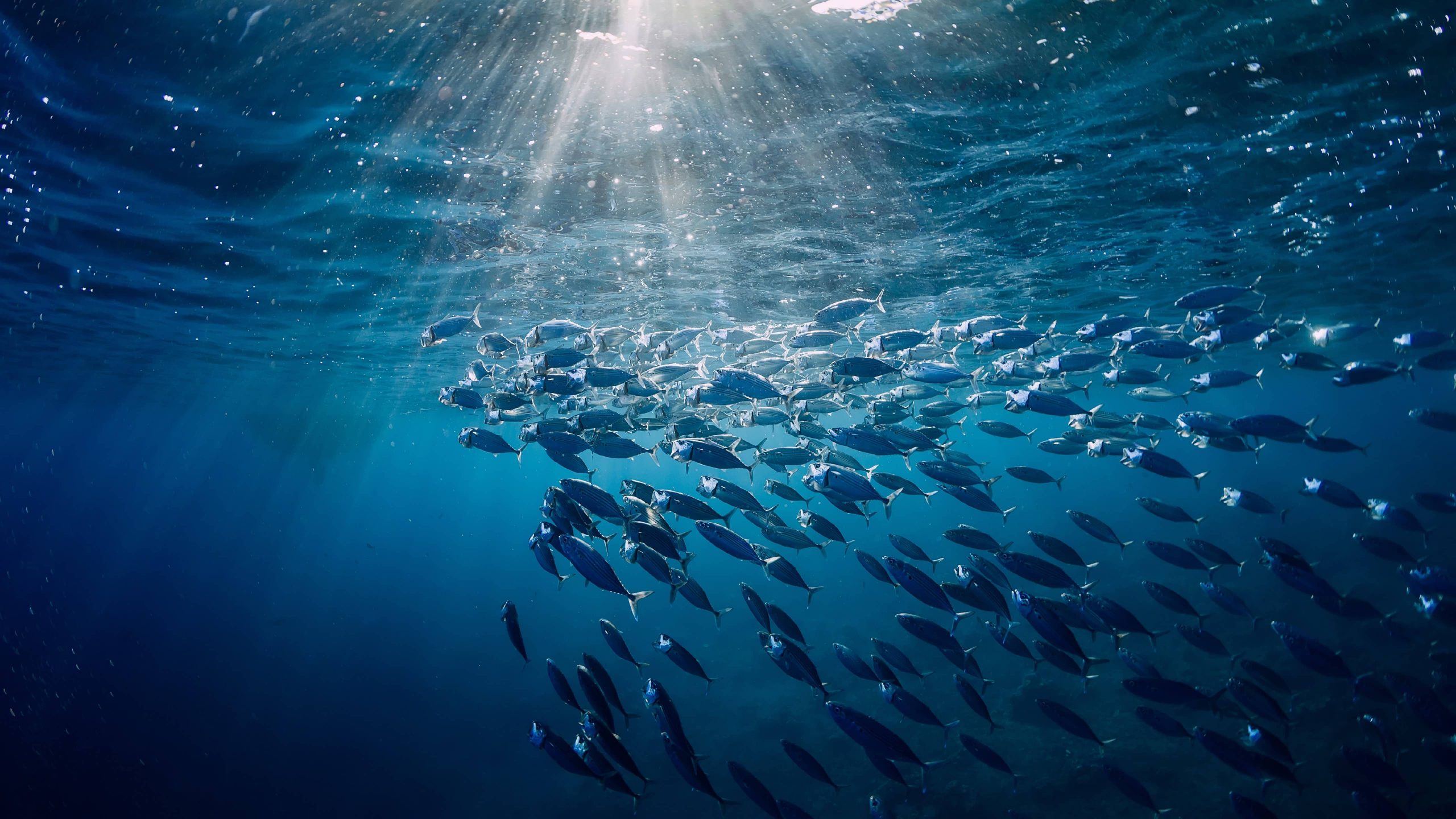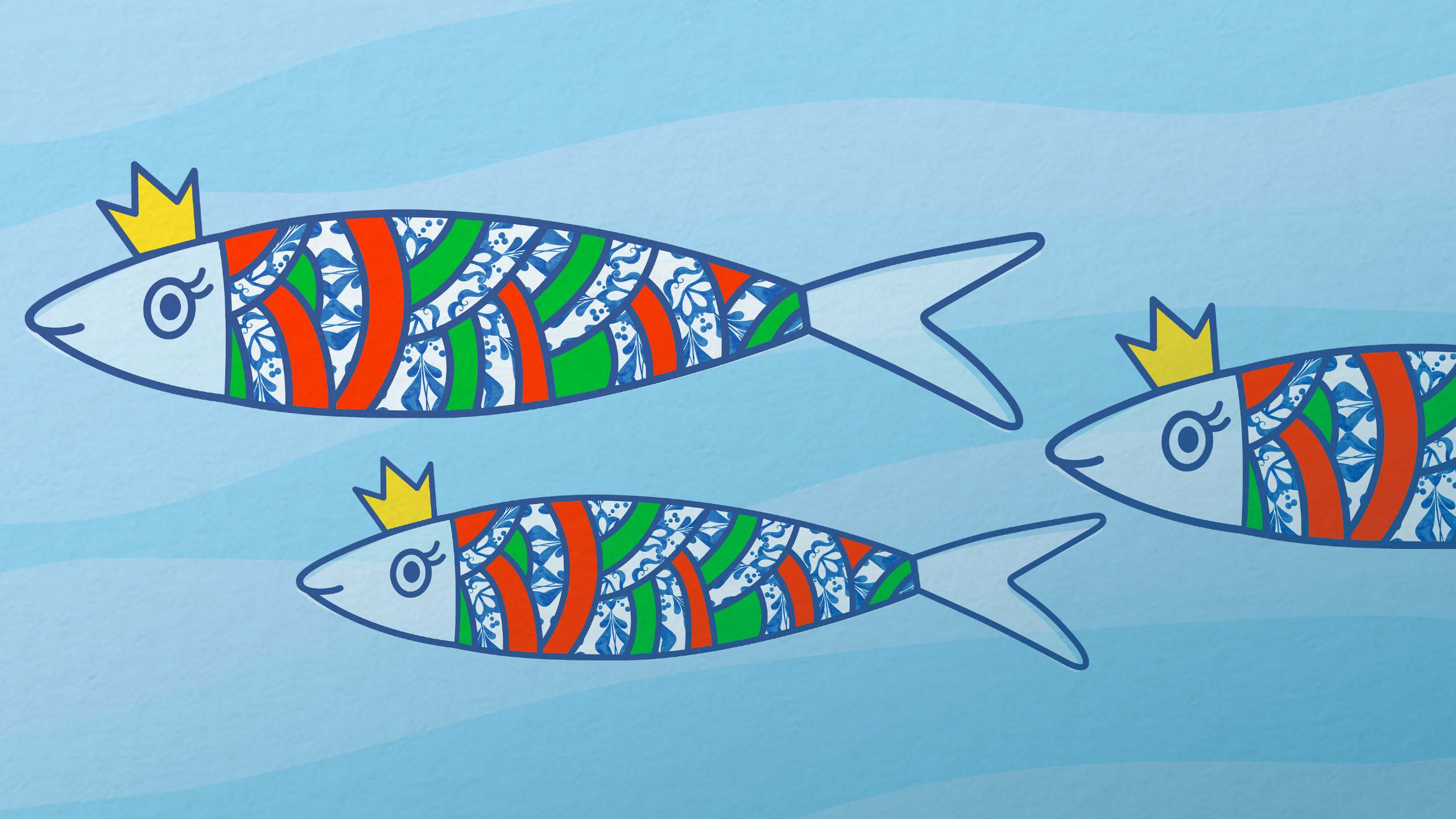Tuna? Yes, please!
It’s Friday night and Rachel wants to go out for dinner after a long week at work. She has a look at the options around her and finally settles on one of the best sushi restaurants in town, where fresh tuna loins are cut by the chef’s sharp blade under her watchful eye. On that same night, not far from that sushi place, Peter’s weekend begins with a quick meal at home: he opens a canned tuna, adds some mayo and spices, and spreads the paste on a crispy bread, with thin cut tomato slices and some fresh lettuce leaves.
If we haven’t opened your appetite, maybe we’ve piqued your curiosity. Tuna fish – fresh or canned, as a humble sandwich or a sophisticated piece of sushi or sashimi – has a story to tell. Once considered an inferior product in certain regions – it was even used as fertilizer or to feed animals – tuna is now one of the most sought-after and consumed fish all over the world.
Since it is so widely consumed outside the sea, what is happening to its habitat? Around 99.4% of tuna is caught in the ocean (only 0.6% comes from aquaculture), a data point that sheds light on the other side of its success: the exploitation of the species. Let’s dive into the history of tuna.
The history and origin of tuna
Tuna (Thunnus, of the Scombridae family) are large, voracious predators and excellent swimmers. This migratory fish travels thousands of kilometres in annual spawning and feeding cycles. Tuna lives in every ocean, although it predominates in the warmer waters of the Pacific, Indian and Atlantic Oceans (especially the Mediterranean Sea).
Since time immemorial, human beings have been one of their major predators. In Japan, tuna fishing dates back more than 5,000 years. As early as the Stone Age, this fish was the protagonist of cave paintings.
From the 1900s onwards, the canning industry changed the paradigm of tuna fishing. Faced with a shortage of sardines, the fish most commonly used for canning at the time, Californian fisherman Albert P. Halfhill began using tuna, which was cheap and plentiful. As a protein food that was affordable and quick to consume, tuna gained popularity among consumers, particularly during the Second World War.
Tuna fishing boomed throughout the 20th century, because of growing demand, the development of the canning industry, and the success of the sushi and sashimi markets, which opened new doors to tuna consumption.
Portugal and tuna fish
Since the 19th century, tuna has been rooted in the Portuguese economy and gastronomy. The shoals that passed along the Algarve coast on their way to the Mediterranean were caught and then preserved by salting. This method was replaced by canning in 1865, when the country’s first fish canning factory was set up in Vila Real de Santo António.
The Algarve continues to be the Portuguese region where the most tuna is caught (around 235 tons a year), although it can also be found in the Azores, especially skipjack and bigeye tuna, where one of the most sustainable fishing methods, pole and line, is practised.
What species of tuna are there?
Of the 14 species of tuna that inhabit the oceans, five species are consumed worldwide: albacore tuna, bigeye tuna, bluefin tuna, skipjack tuna and yellowfin tuna.

-
Skipjack tuna (Katsuwonus pelamis)
This is the smallest and most abundant of all tunas. It is also cheap and has no scales, making Skipjack tuna the most used by the canning industry. Around 60% of all tuna caught is skipjack, of which around half is caught in the Pacific Ocean and is MSC certified, guaranteeing sustainable fishing practices.
-
Yellowfin tuna (Thunnus albacares)
This is the second most-caught tuna species (around 28% of the world’s catch) and is mainly sold frozen or as fresh fillets. It is light in colour and mild in taste, and also very popular raw.
-
Bigeye tuna (Thunnus obesus)
Bigeye tuna accounts for around 7% of global production. Widely used for sashimi, it can substitute bluefin tuna – Bigeye’s preference for the depths of the sea gives it a greater layer of fat.
-
Albacore tuna (Thunnus alalunga)
Albacore tuna accounts for around 4% of the world’s tuna catch and is most consumed in the USA. In recent years, it has lost relevance to other more sought-after species, such as bluefin.
-
Bluefin tuna (Thunnus thynnus)
Considered “the tuna of tunas”, Bluefin tuna can be found in the Atlantic Ocean and Mediterranean Sea. It is highly sought after by the sushi industry (80% is consumed in Japan). Although it is still somewhat over-fished, stocks of this species have been improving. In 2022, bluefin tuna accounted for 1% of global catch.

Why is it important to preserve tuna?
The balance of the marine ecosystem depends largely on tuna. This top predator transports nutrients to the ocean’s surface, contributing to the development of plankton, the production of oxygen, and the capture of carbon dioxide. As the fish with the highest economic value in the ocean, tuna contributes to the economic development of several countries, to the livelihoods of local communities, and to the global food system. It is a source of income, protein, and nutrients.
As a result of high demand, tuna overfishing (fishing more than the specie’s capacity to regenerate threatens its livelihood. Ultimately, overfishing could lead to extinction. In recent years, because of international initiatives to halt this trend, tuna stocks have improved and are at a more stable level of abundance.
There are measures in place, such as the recovery plan for tuna stocks in the Atlantic and Mediterranean, created in 2009 by the International Commission for the Conservation of Atlantic Tuna (ICCAT), which imposes strict controls on tuna fishing. Since 2021, two species of bluefin tuna – one of yellowfin tuna and one of flying tuna – have ceased to be critically endangered or have left the international list of threatened species.
The 2024 report of the International Seafood Sustainability Foundation (ISSF) shows that out of 5.2 million commercial tuna caught in 2022, 86% came from healthy, abundant stocks.
How to fish for tuna?
Tuna can be caught using three main fishing gears, all with sustainability certification possibilities, such as MSC:
- Pole and line fishing: this is a type of artisanal fishing through which only the desired species and the correct amount are caught, one fish at a time. When a shoal is spotted, the boat creates a kind of “shower” that simulates the effect of a shoal on the water and fishers spread bait from the surface (for example, sardines). Deluded, the tuna swims in its direction, where, inside the boat, the fishers and their rods await.
- Surrounding net: this method is used in open waters to catch entire shoals at once. A vertical net surrounds the shoal, and then the bottom is pulled to wrap the fish.
- Longline fishing: to attract fish, this method uses a long fishing line with bait hooks placed horizontally in the sea.

Benefits of tuna in a healthy diet
Tuna is in the fatty fish category, such as sardines, herring, mackerel, salmon, or trout, and is a staple in the Mediterranean diet. But unlike most of these fish, it has the lowest fat value and the highest protein content – 100 g of fresh or pickled tuna contains about 24 g of quality protein. Tuna is also:
- rich in polyunsaturated fatty acids (about 7 g per 100 g), namely Omega-3, which is recognized for its beneficial effect on cardiovascular health;
- a source of vitamin B12, vitamin D and niacin (B3), as well as phosphorus and potassium;
- low in calories, with about 140 kcal per 100 g of fresh tuna (canned tuna is around 100 kcal per 100 g, being more caloric when preserved in oil or olive oil).
Each person is an “expert” in a tuna recipe – be it the classic tuna pasta, a fresh grain salad (or will it be black-eyed beans?), or a comforting pie or tuna rice. Whether fresh or canned, get inspired in the kitchen and try new tuna recipes. To avoid over-exploitation of species, vary your fish consumption!
MSC certification
Several non-profit organizations play a relevant role in ocean conservation – the Marine Stewardship Council (MSC) is one of them. The MSC certifies responsible fishing worldwide, assessing how species continuity and stock maintenance, environmental impact and compliance are ensured. Once the MSC fishing standards are confirmed, the products are certified and a blue seal is placed on the packaging. According to the MSC, 50% of the world’s tuna is involved in its sustainable fisheries program.

Sustainable Fishing in the Jerónimo Martins Group
The Jerónimo Martins Group’s Sustainable Fishing Strategy aims to ensure that fresh, frozen or canned fish products do not contribute to the over-exploitation, depletion or extinction of the species. To that same end, the range has been diversified to ease the pressure on the most consumed wild fish species, and to create viable alternatives from sea aquaculture. Learn more about Jerónimo Martins Group’s responsible purchasing policy.




